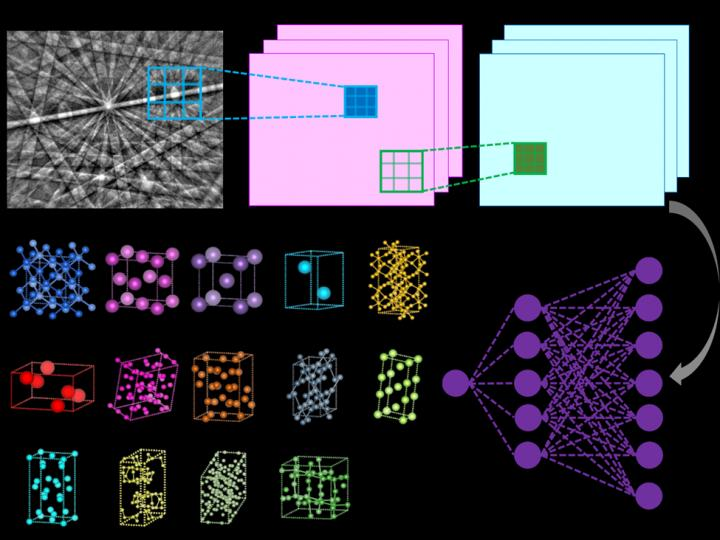Jan 31 2020
At the University of California San Diego, nanoengineers have designed a less-cumbersome, computer-based technique to find out the crystal structures of several materials and molecules—including proteins, alloys, and pharmaceuticals.
 Illustration of the inner workings of a convolutional neural network that computes the probability that the input diffraction pattern belongs to a given class (for example, Bravais lattice or space group). Image Credit: Vecchio lab/Science.
Illustration of the inner workings of a convolutional neural network that computes the probability that the input diffraction pattern belongs to a given class (for example, Bravais lattice or space group). Image Credit: Vecchio lab/Science.
This method involves using a machine-learning algorithm, just as the one used in self-driving cars and facial recognition, to examine the electron diffraction patterns independently with an accuracy of about 95%.
The study was reported in the January 31st issue of Science.
The new method was devised by a research group led by Kenneth Vecchio, a nanoengineering professor at UC San Diego, together with his PhD student Kevin Kaufmann, who is the study lead author.
In this method, a scanning electron microscope (SEM) is used to obtain electron backscatter diffraction (EBSD) patterns. In contrast to other electron diffraction techniques, similar to those used in transmission electron microscopy (TEM), SEM-based EBSD can be carried out on large samples and examined at multiple length scales.
This offers local sub-micron details mapped to centimeter scales. For instance, an advanced EBSD system helps to determine crystal orientations, fine-scale grain structures, relative residual strain or stress, and other details in a single scan of the sample.
But the disadvantage of commercial EBSD systems is the lack of ability of the software to find out the atomic structure of the crystalline lattices found within the material under examination.
Therefore, a commercial software user must choose up to five crystal structures assumed to be in the sample, following which the software tries to identify possible matches with the diffraction pattern.
The complicated nature of the diffraction pattern often leads to the determination of false structure matches in the user-selected list by the software. Hence, the accuracy of lattice type determination by the current software is based on the operator’s experience and prior knowledge of the sample.
The technique developed by Vecchio’s research group performs all this independently. This is because the deep neural network independently examines every diffraction pattern to find the crystal lattice, out of all possible types of lattice structures, with a high accuracy of >95%.
According to the scientists, a broad range of research fields such as structural biology, pharmacology, and geology are likely to benefit from using similar automated algorithms to minimize the time needed to determine the crystal structure.